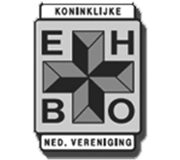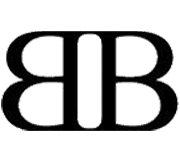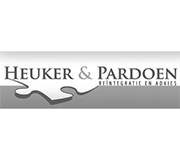Coca-Cola Advertising Through the Years

Coca-Cola is one of the most persistent and well-loved brands in history. It is one of the longest surviving brands, and thus considered among the most successful companies ever. The reason in part of this, is their strong advertising and marketing. Coca-Cola has always relied in advertising to promote and market their brand, and this is why they are always on top of their game, after having been in the market for more than a century! Coca-Cola advertising has indeed greatly affected American pop culture, and even the whole world.
Here is a collection of the best Coca-Cola Advertising from its early days in the 1880′s up until now. Enjoy!
1800′s
It was the eventful date of May 8, 1886, where it all started. John Pemberton sold his first Coca-Cola drink at a soda fountain in Jacob’s Pharmacy, Atlanta. Subsequently he published the first Coca-Cola advertisement in the Atlanta Journal.
Image by Georgia Info
There is little creativity found in the first ad, just some text. No artsy fonts, no images, no gimmicks. The first newspaper ad showed the company’s first (and definitely the last) tagline: ‘Delicious! Refreshing! Exhilarating! Invigorating!’
Soon afterwards, John Pemberton ran a longer and more persuasive newspaper ad. It still promoted the drink as a ‘delicious, exhilarating, refreshing and invigorating’ drink, but added more promises that the drink is an ‘intellectual beverage’, ‘temperance drink’, ‘brain tonic’, and it even claims to be able to cure ‘headache, neuralgia, hysteria, melancholy’ and more.
Photo by Georgia Info
Of course, these claims are not plausible, but a hundred years before there were no organizations that regulated advertising and the false advertising laws were pretty much non-existent. Newspapers during this era were full of fraudulent advertising by quack doctors and scam artists.
Early 1900′s
Coca-Cola advertising during the early 1900′s relied on young women as their spokespersons. The first spokesperson of Coca Cola is model Hilda Clark.
1930′s to 1960′s
Coca-Cola is often credited for creating the image of the modern Santa Claus as an old, jolly and fat man in a red and white suit. Coca-Cola did invent the red-and-white jolly Santa during the 1930′s, the illustration done by Haddon Sundblom. Before Santa, pretty young women were used to endorse Coca-Cola.
Photo by The Coca-Cola Company
The image of Coca-Cola Santa Claus appeared through their advertisements for three decades. Because of Coca-Cola advertising, the Santa Claus we all know and love today came into being. Before Coca-Cola’s Santa, the image of Santa is somewhat varied, he can be big, small, fat, elf-like, lovable, old, young, etc. He has worn all kinds of suits, even donning a priest’s robe or even huntsman animal skin.
Photo by The Coca-Cola Company
End of 1960′s
Until the 1970′s most people enjoyed cola in ice cream parlors or the local soda fountain. The soda fountain counter was a place for socializing with other people. However, at this point in time the fountain was already declining in popularity as bottled drinks and commercialized fast food quickly rose to popularity. As you can see previously, until the 1960′s Coca-Cola advertising shows people holding their drink in a glass rather than the iconic bottle.
Photo by Dir Journal
Photo by DIR Journal
In 1969, They released their new advertising slogan ‘It’s the real thing.’ The campaign now centers on the Coca-Cola bottle itself.
1960-1980
It was during this era that Coca-Cola went global. The company has now spread to 163 countries worldwide. Year after year, it has captured new markets such as Macau, Turkey, Paraguay, the Philippines, to name a few. Not only this, Coca-Cola has expanded into many different flavors such as Fanta and Sprite.
With the swift expansion, Coca-Cola went with a massive advertising campaign. Coca-Cola always believed in advertising. The international appeal of Coke was shared in their advertising with the slogan: ‘I’d Like to Buy the World a Coke’.
The advertisement appeared in 1971 and later became the basis of the song ‘I’d Like to Teach the World to Sing’ by the New Seekers. The advertisement was considered one of the most loved and influential TV ads in history.
1980′s
This decade marked the birth of the diet Coke.
This decade also marked the introduction of the New Coke. It was a desperate effort after Coca-Cola saw a drastic decline in sales and the increased competition from Pepsi. The company execs responded by changing the formula of Coke. On tests, people favored the new taste. But in reality, people hated it. People missed the classic taste of Coke, and there were 8,000 calls, complaints and constant angry letters everyday.
New Coke is considered to be one of the company’s biggest blunder in history. The problem was not the taste, but maybe because it broke tradition. Many Coke lovers were attached to the familiar and well-loved taste that was Coke. Thus, Coke admitted their mistake and announced that it will be using its former recipe again.
Photo by SA Steve
1993
Aside from Santa Claus, one of Coca-Cola’s most memorable symbols of the company,is the animated Polar Bear. It came from the Northern Lights advertising campaign. The first ad featured polar bears watching a ‘movie’, a play of aurora borealis while drinking Coca-Cola.
Photo by Presidia Creative
2000 – Present
The Coke Side of Life
The ad campaign was launched in 2006 and it’s main theme centers around people drinking Coke and feeling happy and positive. You drink Coke, you feel good. The campaign has optimistic and positive vibes, and it captures the very essence of life. It encourages people to love spontaneity and to see the world in full color.
Photo by Coca-Cola Art
The Happiness Truck and the Happiness Machine
Among Coke’s most successful endeavors of today is the ‘Happiness Machine’, or in some countries, the ‘Happiness Truck’. Coca-Cola is grounded in its heritage, at the same time, showed that it can keep up with the times. The Happiness machine uses elements of both guerilla marketing and viral advertising by using ‘YouTube’.
Coca-Cola decided to own a word, and that word is ‘Happiness’. Here are some clips of the ad that appeared online:
Coca-Cola implemented the Happiness Machine in various places and campuses including London, India, Germany, Hungary, Hong Kong and more. The Happiness Truck appeared in various countries like Rio de Janeiro and the Philippines. You can see in the videos the authentic happiness the people get when they receive their Coke surprise.
A Coca-Cola Happy Ending
Two centuries ago in 1886, Coca-Cola was born in a tiny pharmacy in 1886. Now, Coca-Cola still continues to provide magic to everyone who drinks Coke. It has expanded globally to the most far-reaching places, offering 500 brands and products to the world. Coca-Cola is one of the most well-loved brand today, and it continues to serve more than 1.7 billion servings in one day.
Coke has now more than a dozen flavors including Diet Cola, Coke Zero, Coke Cherry, Vanilla, Citra and so much more . Products by Coca-Cola are now over 3,500 including A&W, Dr. Pepper, Real Gold, Royal Tru, Lift, Ponkana, Minute Maid, Fanta, Earth and Sky and Eight O’Clock. What is next for Coca-Cola? Who knows.
- Login om te reageren























